17 de dezembro de 2025
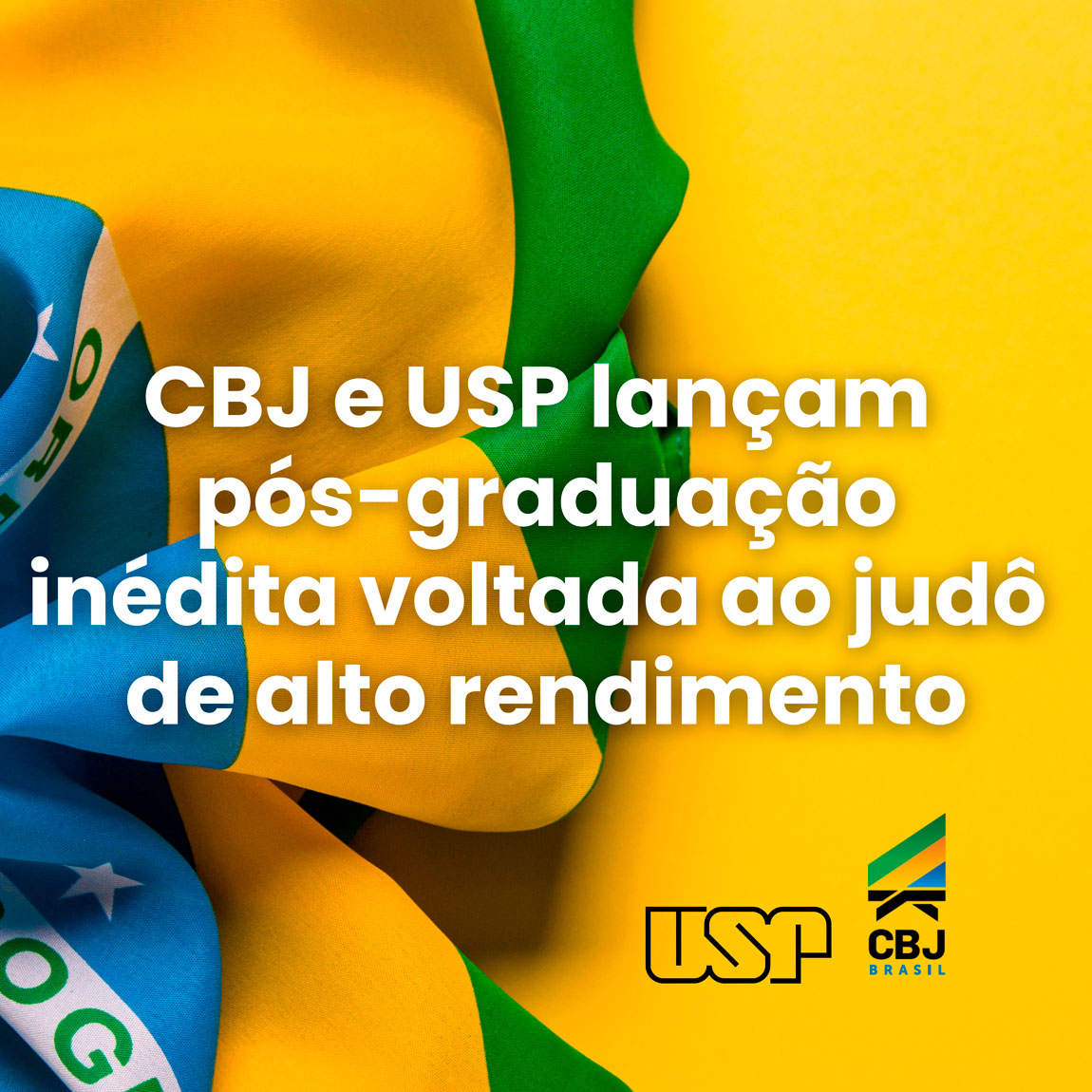
 Historic reconnection: Gilberto Gaertner and Włodzimierz Kwieciński emphasize the importance of unity in traditional karate © PUKT
Historic reconnection: Gilberto Gaertner and Włodzimierz Kwieciński emphasize the importance of unity in traditional karate © PUKT
The reunion, after more than a decade, of the foremost leaders of traditional karate worldwide, recently held in Poland, represented a significant step in the process of reconnecting the karate on a global scale.
The stage for this historic meeting was the gasshuku at the Stara Wieś dōjō — which gathered more than 250 black belts. Professor Gilberto Gaertner, hachi-dan (8th dan), psychologist, PhD, and chairman of the International Traditional Karate Federation (ITKF), shared days of training and dialogue alongside sensei Włodzimierz Kwieciński. More than just an institutional agenda, the visit symbolized the rebuilding of bridges broken since the split of 2013, reaffirming shared values and a willingness to walk together toward a future of cooperation in the spirit of traditional karate.
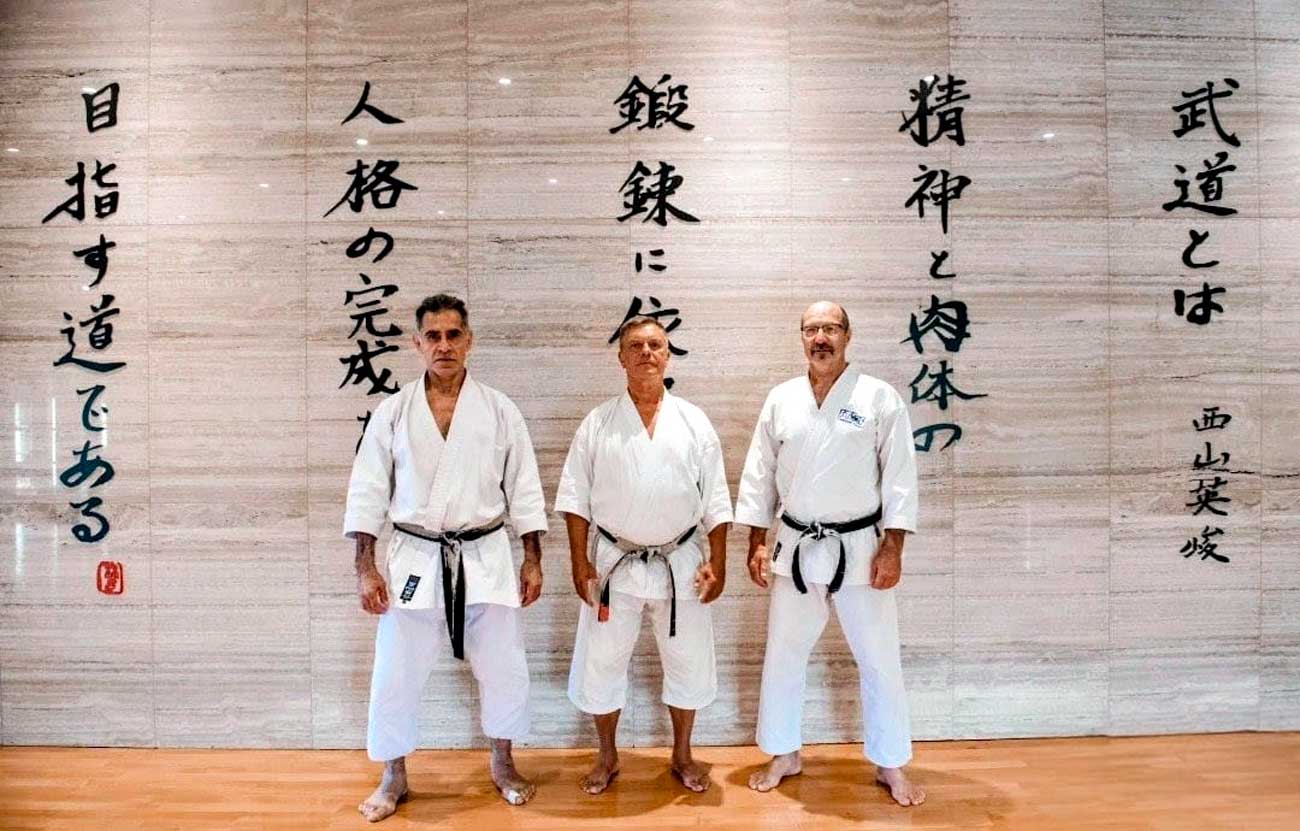
Justo Gomez, Włodzimierz Kwieciński, and Gilberto Gaertner, key global references in traditional karate gathered at Stara Wieś © PUKT
For Gaertner, this is a historic moment of great significance for the discipline. His mission in Poland was to reestablish a link lost in 2013, when, just a few years after the passing of Master Nishiyama, traditional karate split into two groups, each with its own motivations.
According to Gaertner, that division was, to some extent, predictable, as the absence of a charismatic leader like Nishiyama weakened international unity. A similar situation — on an even larger scale — had occurred within the JKA after the death of Master Masatoshi Nakayama in 1987.

The gasshuku held in Stara Wieś brought together 250 black belts © PUKT
This rapprochement, however, did not happen overnight. It was gradually built over the years, especially through the efforts of Argentine sensei Justo Gomez, who maintained contact with both sides and, more recently, strengthened ties with the Polish federation through his participation in several technical events in the country.
“This encounter opens wide possibilities for the karate world, such as the promotion of meaningful exchanges and the chance for new generations not to be limited by specific organizations, but rather to access the full richness of traditional karate on a global scale. Another important aspect is the potential use of the Stara Wieś training center to host integrated events.”
Welcomed with respect and cordiality at the Stara Wieś dōjō, Gaertner had the opportunity to train and exchange ideas for three days with sensei Kwieciński. From this close interaction emerged key points of convergence in traditional karate, such as the focus on self-defense, education, health promotion, and quality of life.
“I believe we have opened doors for future joint actions and for cooperation that transcends institutions,” said Gaertner.
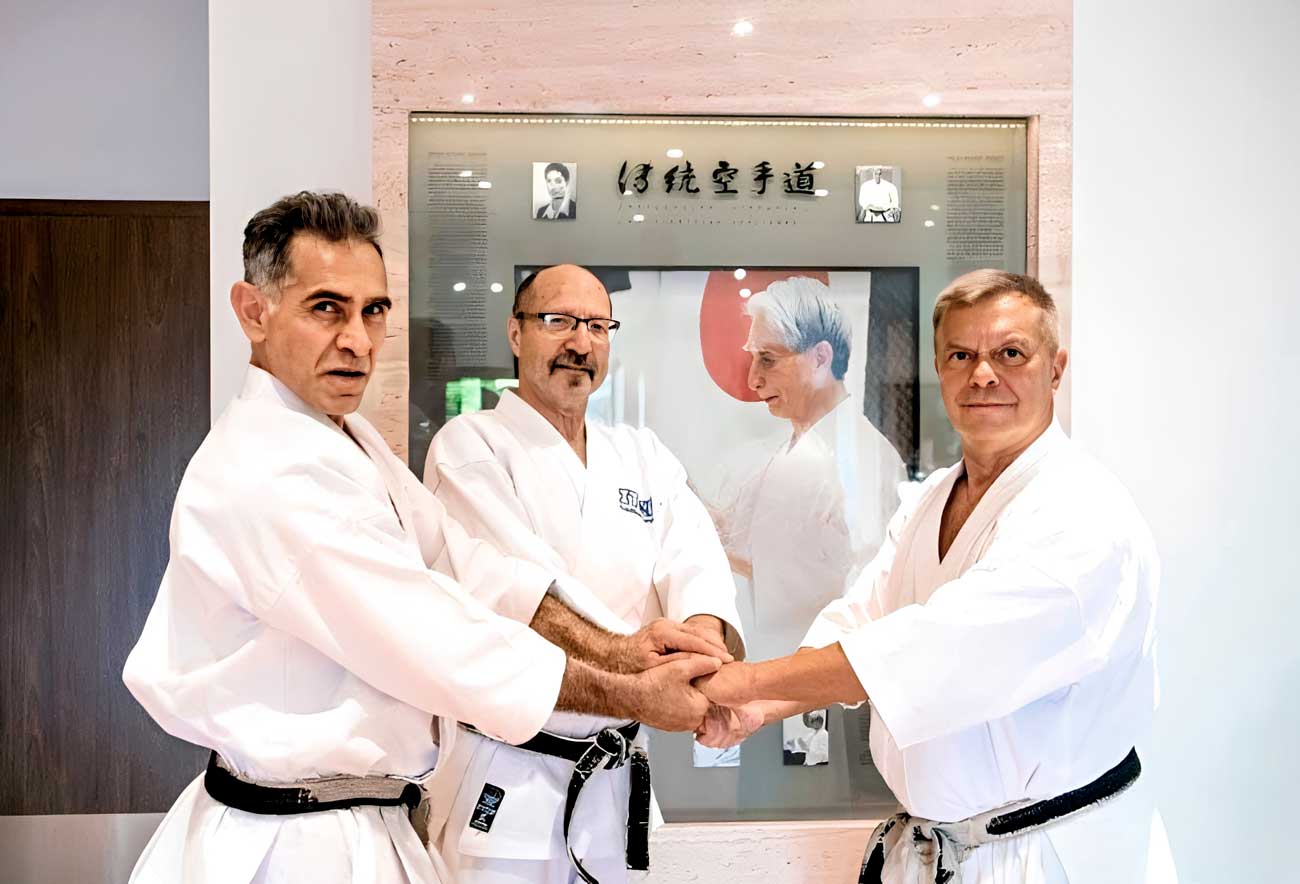
The strength of traditional karate represented by Gomez, Kwieciński, and Gaertner in an act of unity and mutual respect © PUKT
For the ITKF chairman, the value of this meeting goes beyond protocol: it represents the possibility of building a strong international agenda, rooted in shared principles of education, health, self-defense, and fidelity to the philosophical essence of karate.
“When we manage to overcome institutional barriers and put the ideals of our master Nishiyama at the forefront, we take a true step toward the unity and strengthening of traditional karate worldwide.”
Beyond institutional representation, Gaertner emphasized that what truly unites practitioners is the responsibility to carry forward the precepts of traditional karate developed by Nishiyama. In this sense, he assessed that the meeting symbolizes the reconnection of the discipline on a global scale and conveys to future generations an example of the importance of dialogue, understanding, and cooperation.
In his words, while the world goes through a turbulent period marked by wars and imbalances of various kinds, traditional karate must follow another path: that of peace, education, health, and balance.
“I leave deeply satisfied for having experienced this moment of reconnection in traditional karate and, at the same time, happy to reunite with a longtime friend and fellow karateka,” said Gaertner.
For him, the experience was not just a circumstantial meeting, but the opening of a new cycle for the discipline.
“These days in Poland reinforce the certainty that the future of traditional karate must be built on dialogue, friendship, and the commitment to honor Master Nishiyama’s legacy, transforming it into concrete actions that reach future generations.”
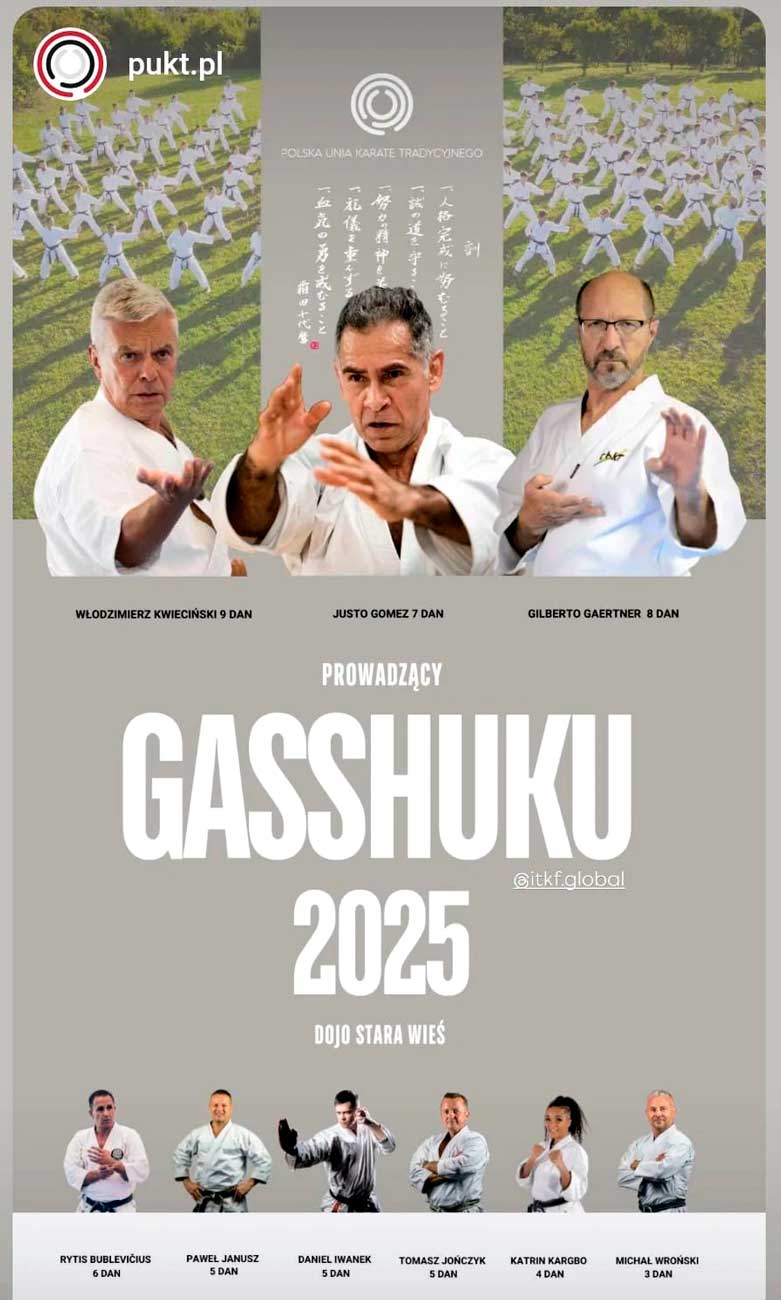
Promotional poster of the Gasshuku 2025 in Poland, which brought together hundreds of practitioners under the leadership of great masters of traditional karate © PUKT

17 de dezembro de 2025
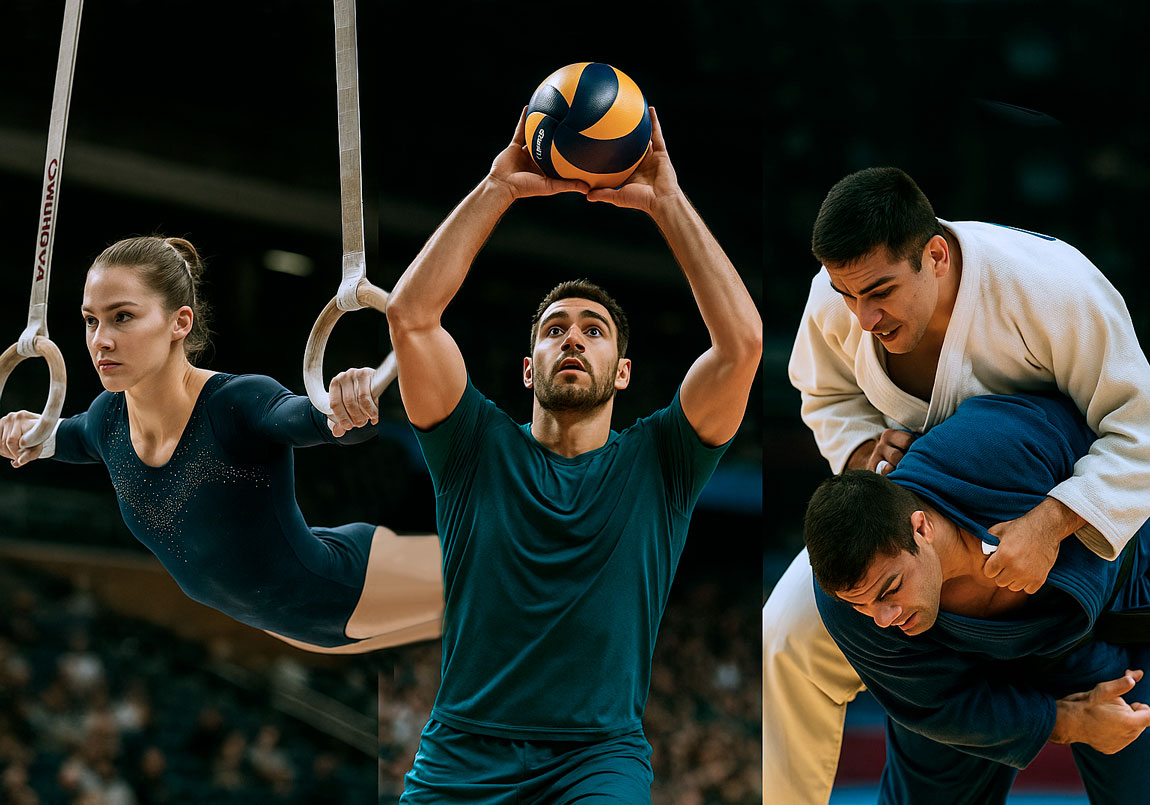
12 de dezembro de 2025
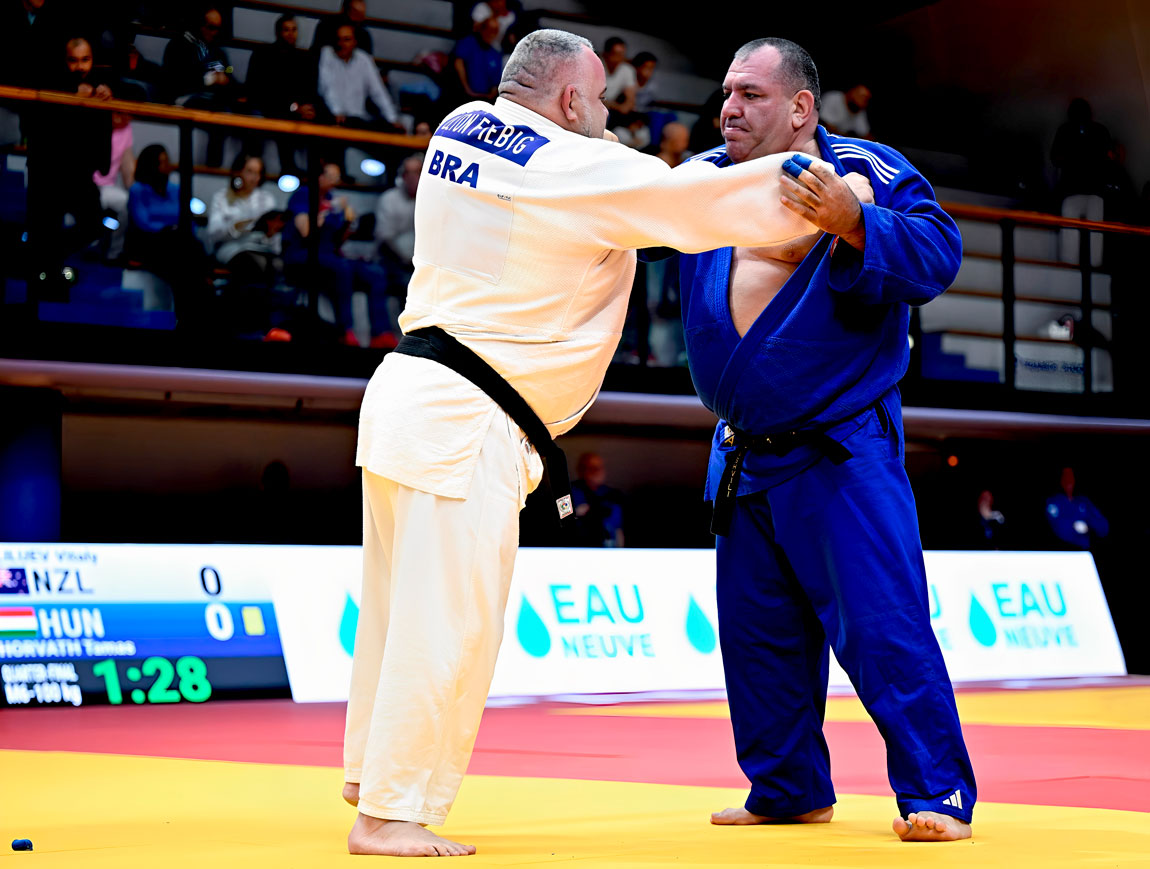
12 de dezembro de 2025